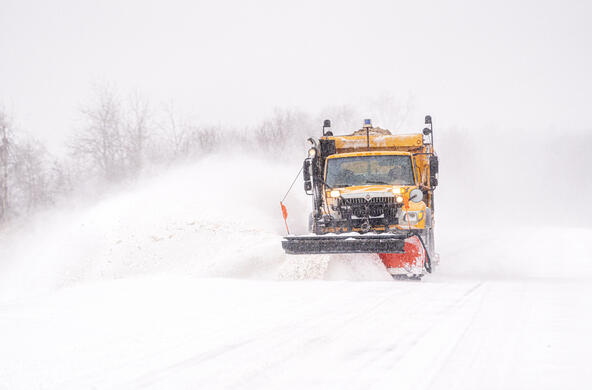On December 15, Cary Institute researchers held a press conference with officials from East Fishkill, NY, to release findings and recommendations regarding road salt use. Local media attended and interviewed Dr. William Schlesinger, Dr. Stuart Findlay, and Ms. Victoria Kelly. Coverage of the event based on the Institute report, “Road Salt: Moving toward the Solution,” has been featured in newspaper and online sources and by affiliates of NPR and Time Warner.
Last winter, between 10 and 20 million tons of salt were used nationally. When the practice of salting snowy roads began in the 1940s, annual use amounted to 5,000 tons. It was formerly assumed that road salt washed out of watershed areas with spring melts, but as Findlay notes, about 10 years ago high salt concentrations were found in local streams during the summer. A 2008 study conducted in Dutchess County revealed that the average sodium concentration of 128 wells was over twice the amount suggested as safe by the EPA.
During the press conference, Schlesinger said that “snow is a fact of life in the Northeast, but there are techniques to keep roads clear that result in less of a salt burden, on both the environment and municipal pocketbooks.” Kelly, who was lead author of the report, emphasized numerous ways to improve the efficiency of road salt applications, such as properly calibrating equipment, retrofitting trucks with temperature sensors, and reducing the amount of salt in sand mixes. The example of East Fishkill is instructive: its retrofitted salt trucks reduced salt use by 3,483 tons, and the town saved $243,810 in salt costs during the first year.
The full report is available online.








